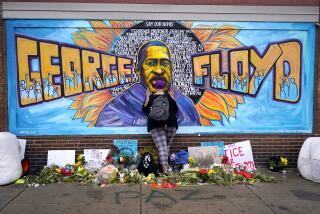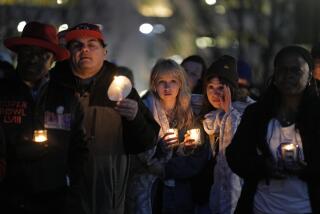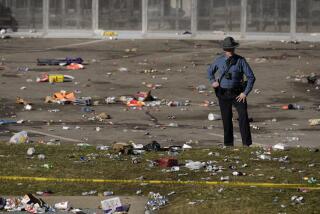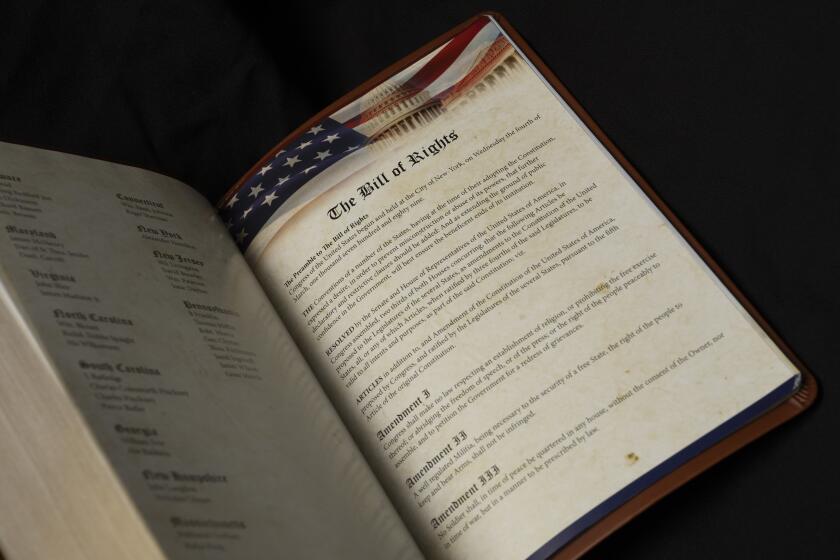Shooting at Minneapolis’s George Floyd Square mars day of remembrance
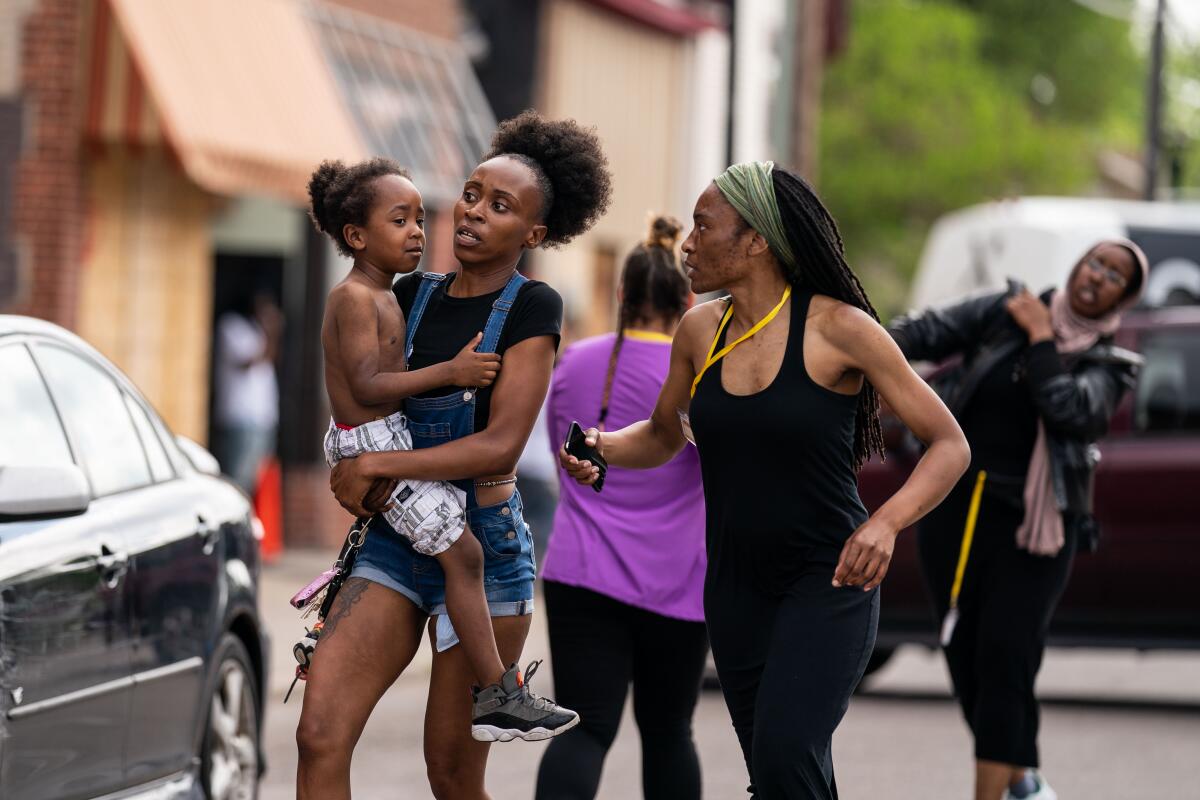
MINNEAPOLIS — As people gathered to remember George Floyd across the country — from the Twin Cities to downtown Los Angeles, Houston and Washington D.C. — they faced questions not only about social justice, but about how best to respond to a spike in crime in many major cities since his death.
At George Floyd Square in Minneapolis a few feet from where he was killed a year ago — just as a day of remembrance was about to start at 10 a.m. Tuesday — violence in this city was on full display: Shots rang out, sending scores of people scrambling for safety.
Stray bullets shattered a window and ripped into a tour bus as parents sprinted to find children who moments earlier had been playing nearby. Men threw themselves on the ground and ducked behind buildings. The gunfire could be heard several blocks away, where elderly bicyclists and pedestrians stopped on sunny sidewalks, wondering hopefully if the sound might be fireworks.
Closer to the alley on 38th Street where the shooting erupted, Mileesha Smith recognized the threat instantly: She’d heard shootings several times this past year while patrolling the square. She grabbed her two sons, who had brought water guns and supplies for a lemonade stand.
“My kids are 5 and 8 and just experienced their first shoot-out,” said Smith, 30, a bulletproof vest slung over her thin frame, shorts and a tank top. “My anxiety is through the roof. What just happened is why we are here. We are dying, not just by the police. We can’t even have a nice moment without someone trying to kill us.”
Floyd’s relatives met with President Biden and Vice President Kamala Harris for more than an hour Tuesday to discuss his namesake police reform legislation, family attorney Ben Crump said afterward outside the White House. The George Floyd Justice in Policing Act , which Biden had hoped to pass by Tuesday, remains stalled in the Senate. The legislation would create a national registry of police misconduct, ban racial and religious profiling by law enforcement and overhaul qualified immunity for police.
An individual sought treatment after the shooting for a non-life-threatening gunshot wound at a nearby hospital, authorities said. Witnesses said they saw people in several SUVs arguing in the alley off 38th Street at the time of the shooting. The window of a nearby salon had been shot out and a trail of blood drops led into a nearby alley.
Guitarist Ananda Bates had played one of his songs, “We the People,” in the square and was gathering equipment in a bus parked by the alley when he heard the gunfire. He immediately reached for two boys who had been playing in the bus.
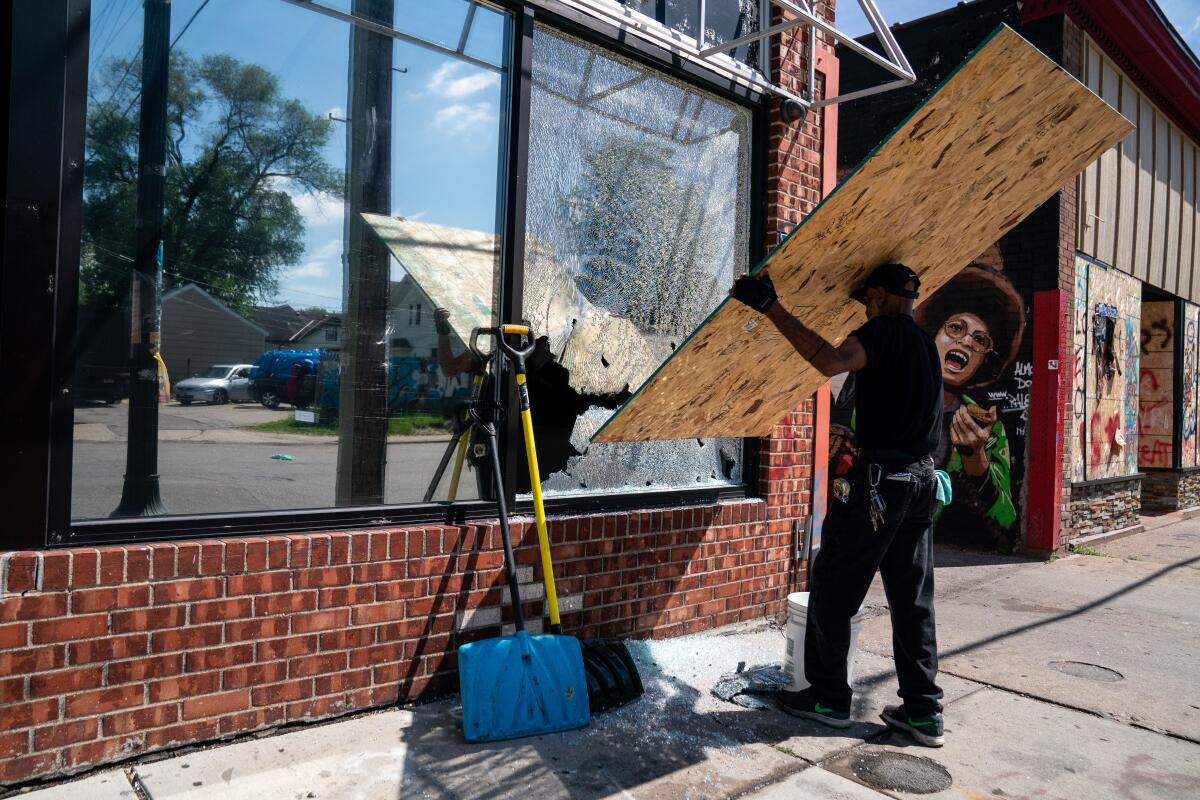
“I just grabbed the kids and lay on top of them,” he recalled.
He could feel gunfire strike the bus, he said. When the boys’ mother rushed onto the bus moments later, Bates, 49, who lives a few blocks away, asked, “What’s the protocol? Do we call the police?”
Her answer: No.
There was no police presence in the square, even after the shooting.
Since Floyd’s murder by Minneapolis Police Officer Derek Chauvin, neighbors have been patrolling the square themselves, even as crime in the city has spiked. A 30-year-old man was fatally shot in the square March 6. Shootings and homicides have more than doubled so far this year, with 31 people killed, including several children fatally shot in recent weeks.
As Smith walked the streets, she passed small groups of neighbors sheltering in yards.
“Wellness check!” she called.
“We’re all right,” one of a dozen teachers wearing union T-shirts called back. “We need to do a wellness check on you.”
Smith paused in the yard, and the teachers prayed over her.
“God, we say, give us peace,” the woman intoned. “We thank you that no one got harmed. Let us continue with the work we had planned for today.”
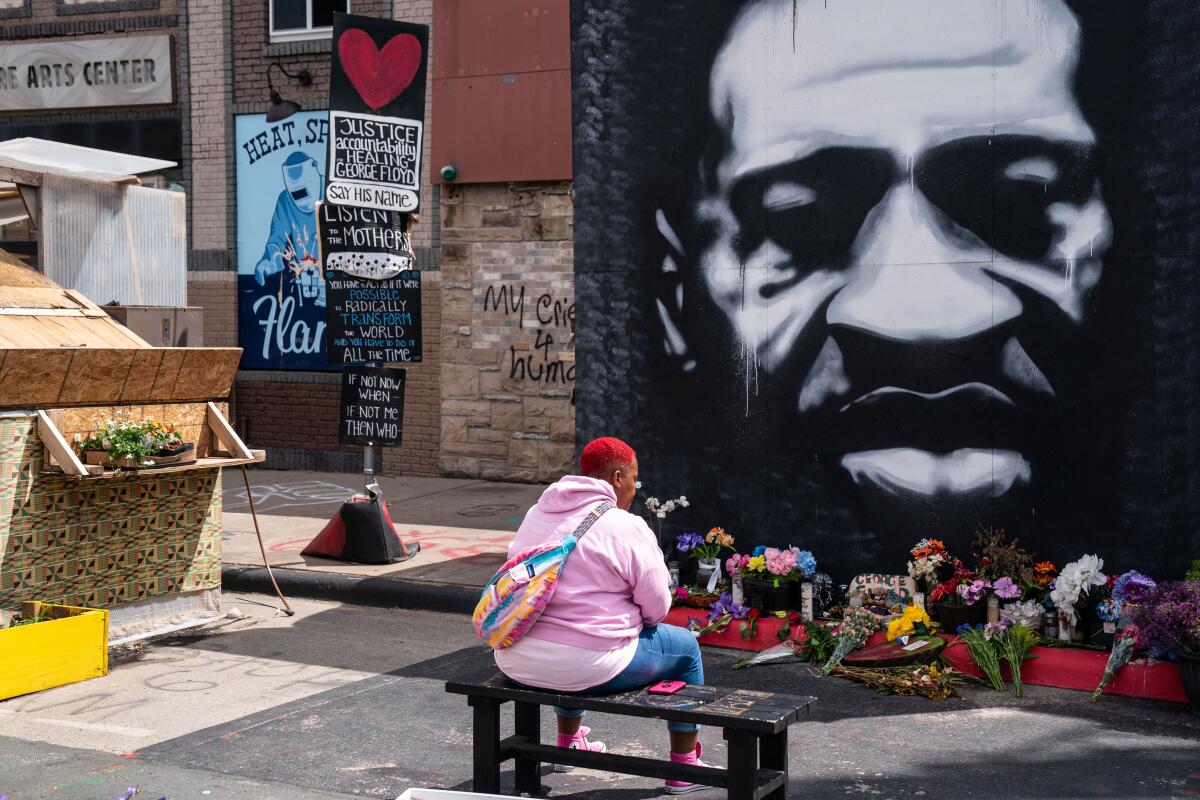
After the shooting, teachers at nearby Wellstone International High School canceled a student field trip to the square. Neighbors reconsidered bringing their children to the square after school as planned. Others were undeterred.
“It didn’t keep us away,” said Dupree Logan, a retired minister who drove in with his wife from the suburb of Edina. “We don’t walk in fear.”
Ruth Logan said she did worry about the safety of children in Minneapolis, especially on the north side, where several have been shot near their church.
The couple had been to the square before, but wanted to check the atmosphere Tuesday.
“It’s very encouraging,” he said as they left. “There’s still a sense of real unity. George’s death triggered not just a movement. People understand that for real change, there has to be sustained energy. This can’t be something that ends in a season.”
Melissa Monroe, 36, brought her 16-year-old son and 7 year-old twin daughters to the square even after the shooting. Her eldest was taking photos for a journalism class. All of them are half Black, she said, and wanted to come to show support for the community.
“Even with what happened this morning, we’re still thriving,” she said as they surveyed memorial displays near the intersection.
Around the corner from the square, Smith passed a field full of grave-shaped signs honoring dozens of victims of police brutality and checked on volunteers setting up a nearby stage, hugging them for a long moment.
“We’re supposed to be celebrating,” she said as she walked back toward the square. “But no, I’m doing wellness checks.”
She stopped a couple she knew and urged them to remain vigilant, to question strangers they saw in the square.
“I know this is a village atmosphere, but ask people what they’re doing,” she said.
Smith stopped under a tent where her sons were waiting. They pleaded for chips and soda. She promised to help them set up their lemonade stand. Then she walked a few feet away to contemplate the memorial to the man fatally shot in the square in March, Imaz Wright, 30, a member of the Rolling 30′s Bloods gang. Another member of the gang has been charged with murder in connection with the shooting, which authorities said was over an internal gang dispute.
Smith urged nearby reporters focused on Floyd to cover Wright, too.
“We’re saying Black lives matter, but you guys don’t get to pick and choose which lives,” she said.
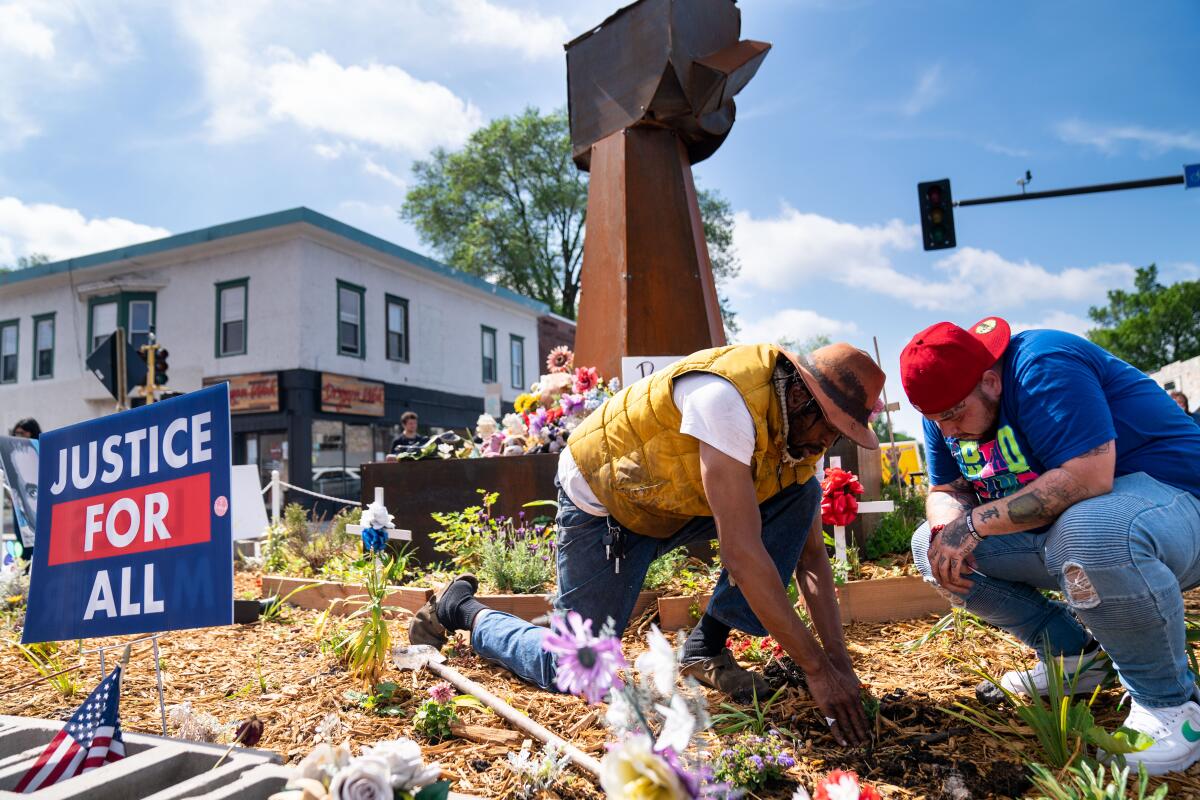
She recognized a neighbor and gave him a hug. Then she looked at the crowd, which had swelled again with onlookers and reporters, many of them white.
“They love us when we’re dead,” she said.
The man nodded.
Smith returned to her sons in the tent. There she prepared for the rest of the day’s events. There would be healing circles and cookouts and prayers. This was, she decided, a teaching moment. She shed her bulletproof vest. It had started to feel too heavy.
More to Read
Sign up for Essential California
The most important California stories and recommendations in your inbox every morning.
You may occasionally receive promotional content from the Los Angeles Times.

